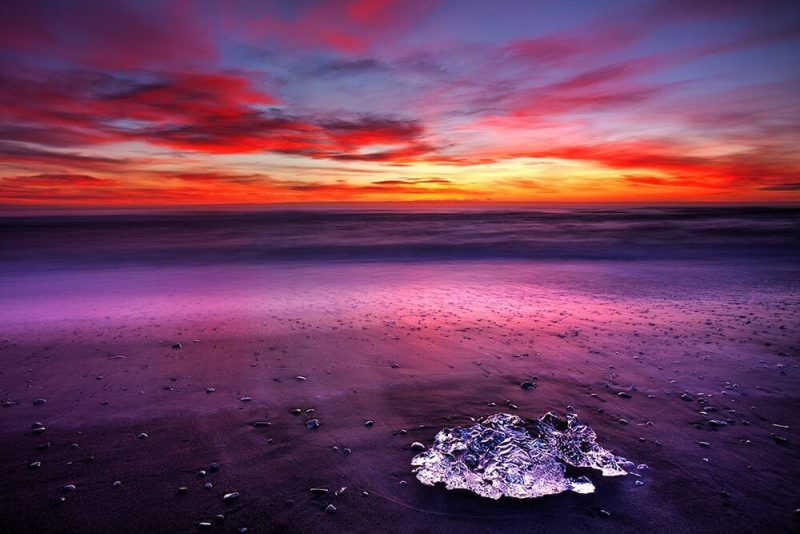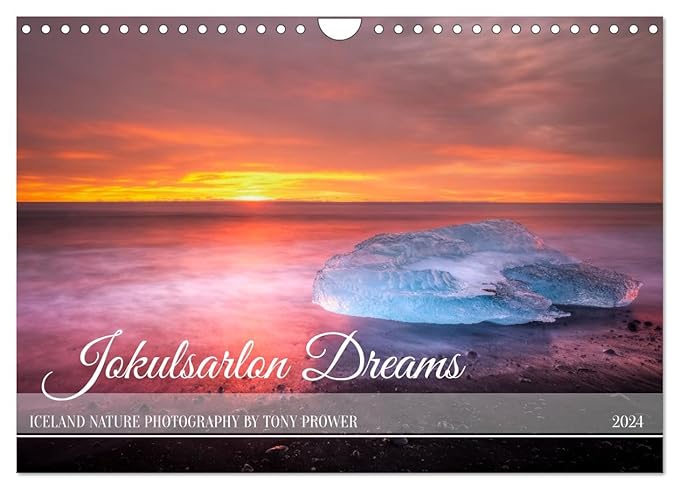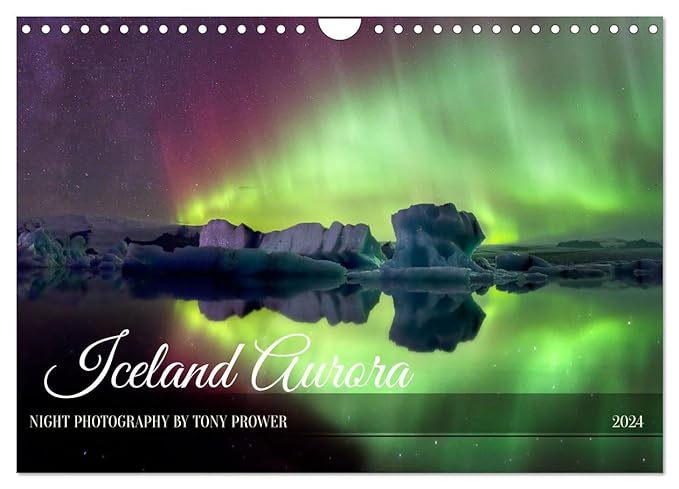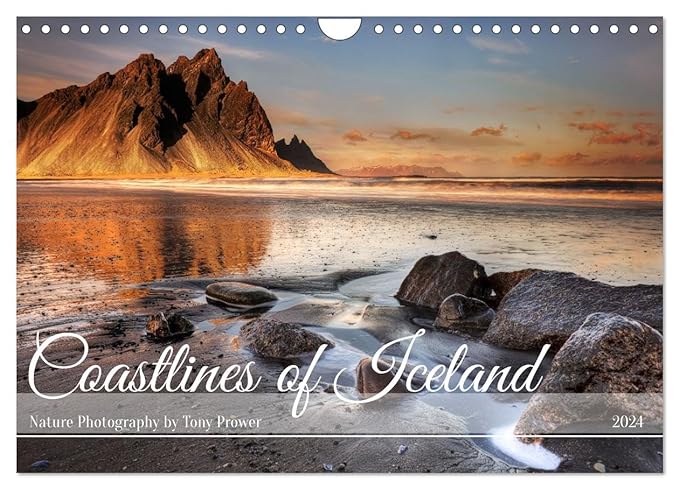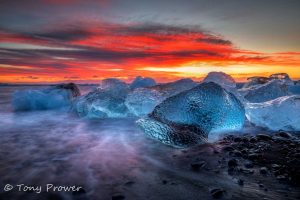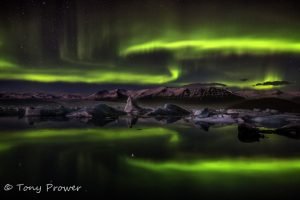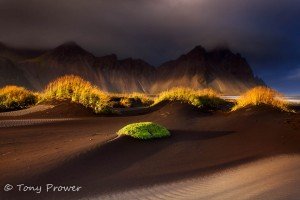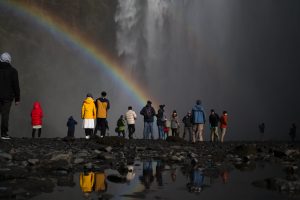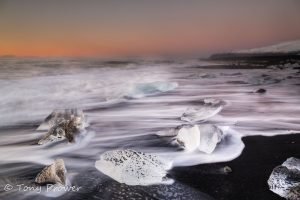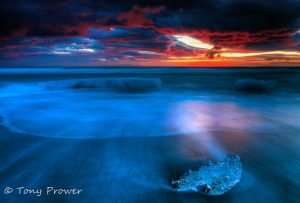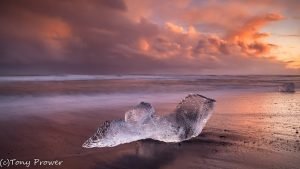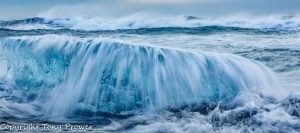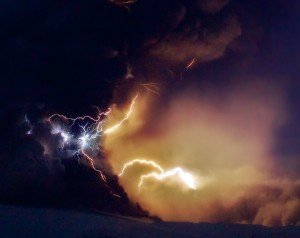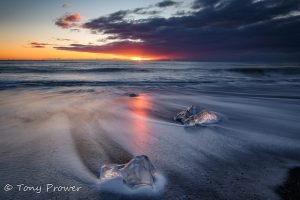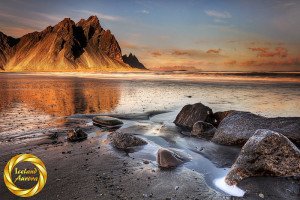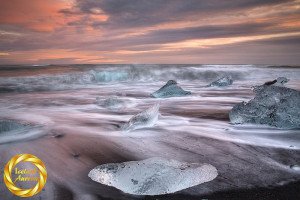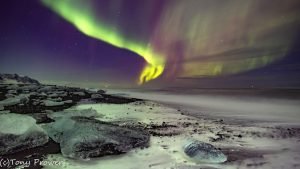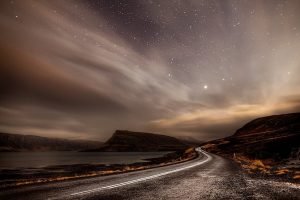Taken on December 12 , 2010
Location: Ice beach near Jökulsarlon. The beach is the final land based resting place for ice chunks that calve from the retreating Vatnjökull ice cap. The ice eventually melts into the North Atlantic, but not before being washed up on this beach for a while.
Camera Settings
- ƒ/8
- 24 mm
- 168 seconds
- 50
Mode: AV mode with + 2 stops over (compensation +/-).
Focus: f/11 hyperfocal mark. This is slightly weighted to the foreground.
Background
This photo was taken on a December morning on a Winter tour. There was a strong Winter Sunrise as we headed to the beach. The Winter sunrises last so long in Iceland. This was one of those ‘perfect sky’ mornings.
Aperture
I chose f/8 as an attempt to get the best sharpness on the ice. I had read about f/8 being the sweet spot of many lenses so I thought I would give it a try.
Composition
What is important to me in this composition is to have the little ice pop in the immediate foreground. I was essential to place it in the bottom third of the frame to act as an immediate point of attention. The middle ground – beach needed to have a reasonable proportion as this was the area where I was going to build up the colour. Obviously, the sky needed a good proportion of the frame because the rich colours are the emotive aspect of the imagery.
Camera Gear
Recommended equipment for Magic Cloth Long Exposures.
Magic Cloth
Long exposure = 168 seconds = almost 3 minutes.
Because of the foreground ice being so small, this long exposure was just as much a matter of luck as skill. It would only take one huge Atlantic surge within my 3 minute window to rock the ice or move it completely. In fact that is what happened on the 2 previous attempts… this was 3rd time lucky.
As much as I didn’t want the huge wave, I needed the smaller waves because they were keeping the sand wet for the colour build-up. The colour build up is a special application of the Magic Cloth and is the main point of this article.
At this point in time, I had realised that the saturation of colours was better in long exposure photography. I also noticed that saturation was better when the sand was wet but not while it was being washed. While it was being washed,the white of the surf washes out the reflected colours. The white of the surf can be desirable in some cases when it creates beautiful streaking lines. This is better with a not so long exposure of just a couple of seconds. On a much longer exposure the heavy white blur can spoil the image.
Colour build-up
The colour build up technique is a special Magic Cloth application to maximise reflected colours on a beach during a sunrise or sunset photo shoot. The idea is to give the exposure much more time than is needed. This 168 second exposure could have been around 1 minute of actually exposure. Most of the time the lens is covered by the cloth. On this image, I followed each wave with my cloth. I only exposed when the wave had retreated and the sand was wet. I never exposed when a wave was up the beach or on it’s way in. So this shot is actually around 1 minute exposure of wet sand – impossible without the Magic Cloth because the reflective surface fades after just a few seconds. The sky had around 4-6 seconds of exposure.
Gallery
This photo is available as a fine-art photo print.
